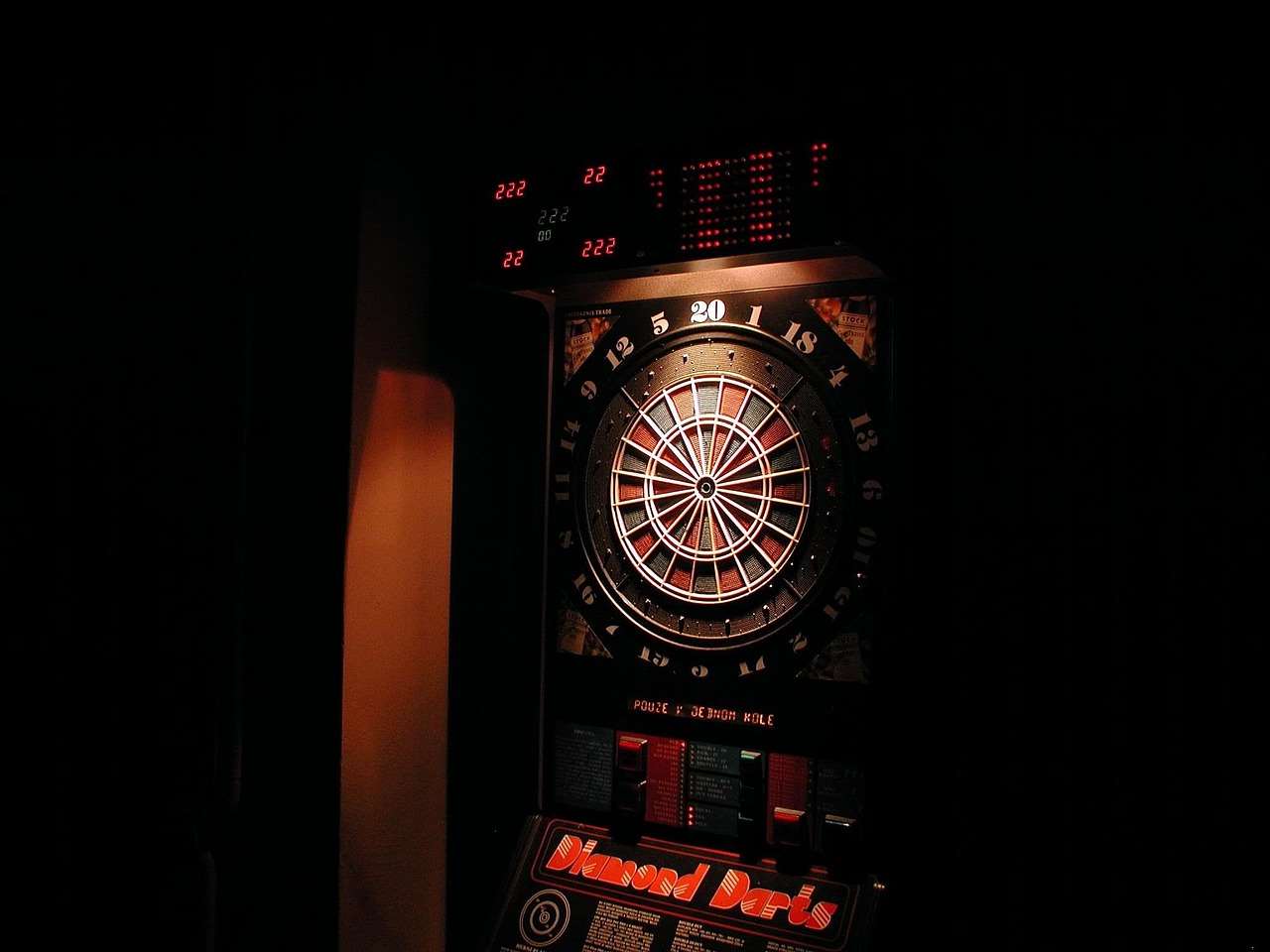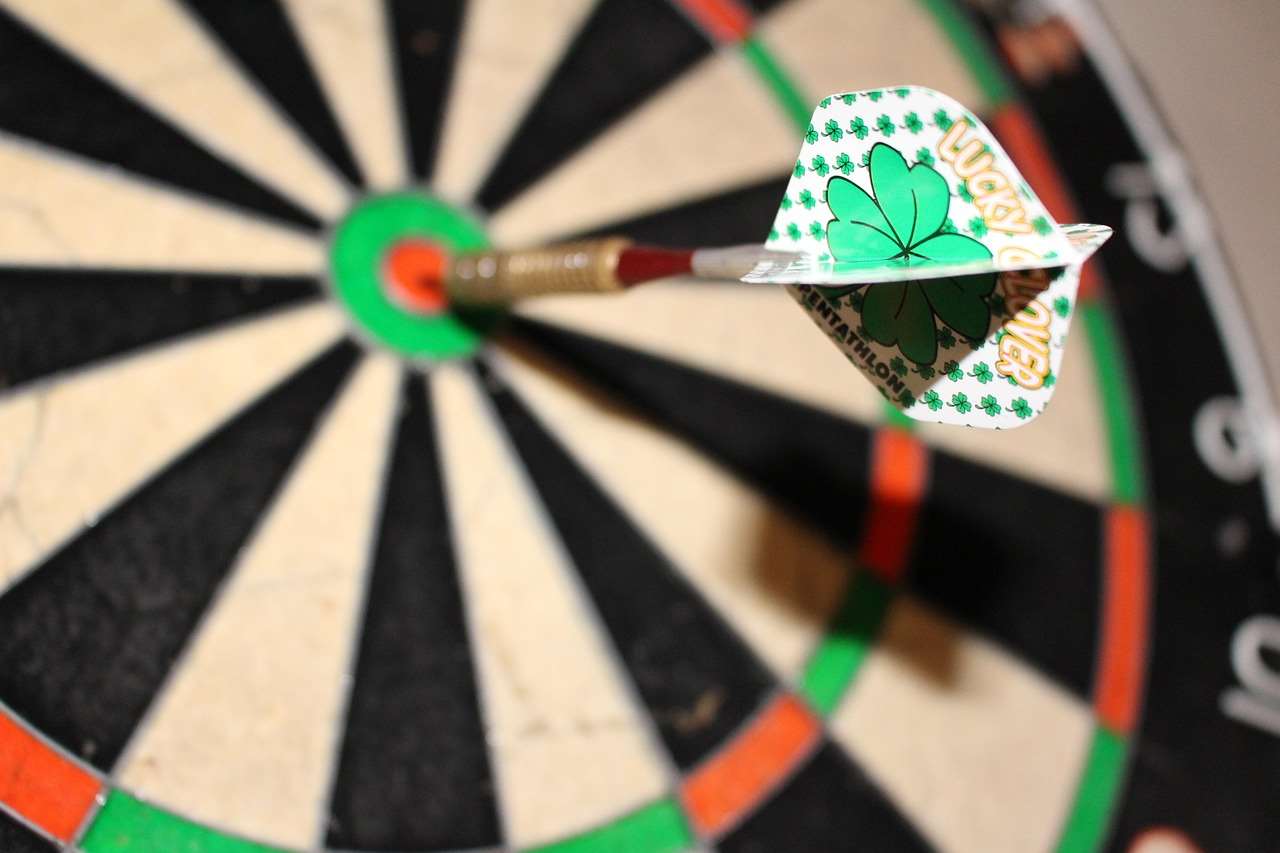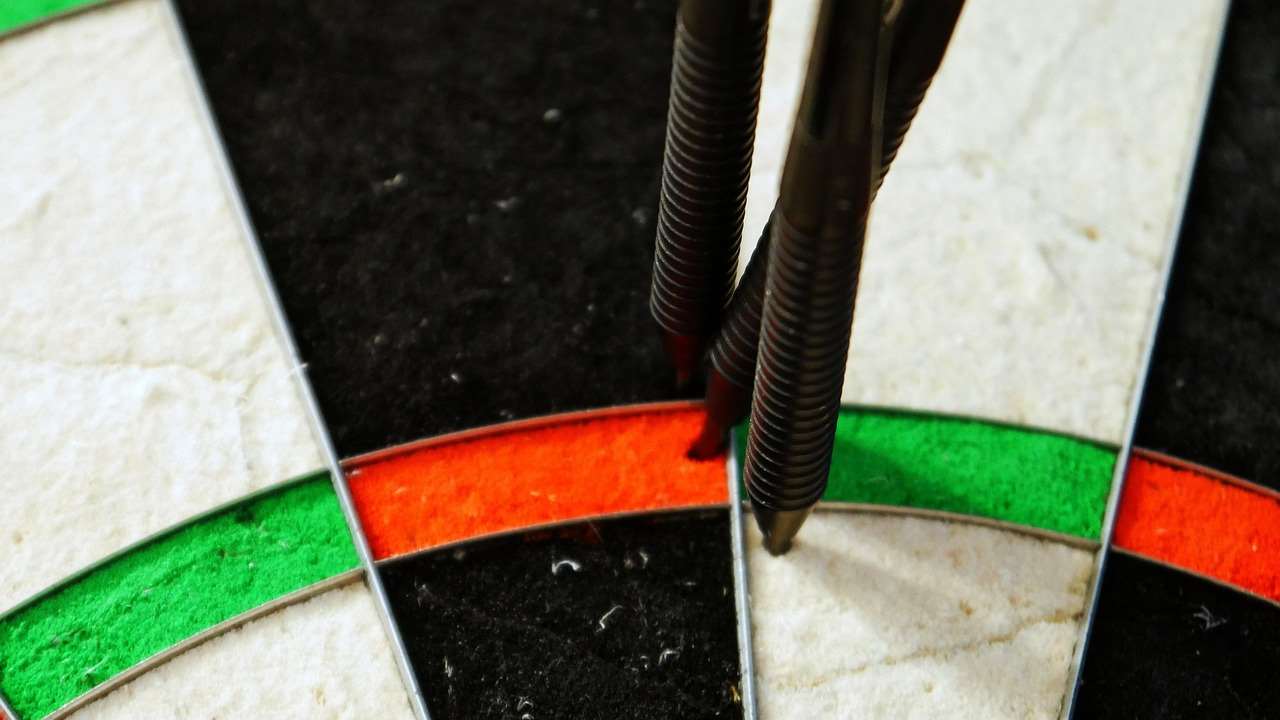The key to a successful Dart Setup For Wind Conditions lies in adjusting your stance, grip, and throw to compensate for the wind’s impact on the dart’s trajectory. This article provides a comprehensive guide on how to adapt your dart game to various wind scenarios, offering tips on dart selection, stance adjustments, and throwing techniques for optimal performance, and also covers related equipment selection.
⚠️ Still Using Pen & Paper (or a Chalkboard)?! ⚠️
Step into the future! The Dart Counter App handles all the scoring, suggests checkouts, and tracks your stats automatically. It's easier than you think!
Try the Smart Dart Counter App FREE!Ready for an upgrade? Click above!
Understanding the Impact of Wind on Dart Trajectory
Before diving into specific adjustments, it’s crucial to understand how wind affects your darts. Wind doesn’t push the dart directly sideways; instead, it creates a force that can cause the dart to drift during its flight. This effect is more pronounced over longer distances, making outdoor games more challenging. The strength and direction of the wind are critical factors to consider. Stronger winds will naturally have a more significant impact, and crosswinds will require different adjustments than headwinds or tailwinds. The type of dart and flight you are using can also influence how wind impacts it.

Factors Influencing Wind Drift
- Dart Weight: Heavier darts are generally less susceptible to wind drift.
- Flight Size and Shape: Larger flights catch more wind, increasing drift. Smaller, streamlined flights offer better wind resistance.
- Wind Speed and Direction: Understanding these factors is paramount for making appropriate adjustments.
- Throwing Power: A more forceful throw can help the dart cut through the wind, but consistency is key.
Selecting the Right Dart Equipment for Windy Conditions
Choosing the right dart equipment can significantly improve your performance in windy conditions. Consider using heavier darts and smaller flights to minimize wind drift. The material of your dart shaft and flights can also play a role in durability and performance in outdoor settings.
Dart Weight and Material
Generally, a heavier dart (around 24-26 grams) will be less affected by the wind than a lighter dart. Tungsten darts are a popular choice due to their density, allowing for a slimmer profile and reduced air resistance. The grip texture is a personal preference, but a secure grip is essential, especially when dealing with wind that can disrupt your concentration. It’s always a good idea to Choose Best Dart Equipment based on your personal preference, playing style and conditions.
Flights and Shafts
Opt for smaller, more streamlined flights like standard or slim flights. These offer less surface area for the wind to act upon. Durable materials like nylon or polycarbonate for shafts and flights can withstand outdoor conditions and prevent premature wear and tear.
Adjusting Your Stance and Grip
Your stance and grip are fundamental to a consistent throw. In windy conditions, subtle adjustments can make a big difference. Maintaining a stable base is crucial, and your grip should be firm enough to control the dart but not so tight that it causes tension.
Stance Modifications
A wider stance can provide greater stability in windy conditions. Leaning slightly into the wind can also help counteract its effects. Experiment with small adjustments to find what works best for you. Remember to keep your weight balanced to avoid throwing off your accuracy. Be sure you are using a **quality dartboard** that can withstand some beating from outdoor elements. Check that the board is level as well as a leaning dartboard can also mess up your accuracy.

Grip Techniques
Ensure a firm, consistent grip. You might consider using a slightly firmer grip than usual to maintain control in the wind. However, avoid gripping too tightly, as this can cause muscle fatigue and reduce accuracy. Experiment with different finger placements to find a grip that provides optimal control and stability. This can be quite important when looking at dart setup for wind conditions. Using high end equipment can only improve the grip so much, its how you hold the dart that really matters.
Throwing Techniques for Windy Conditions
Adjusting your throwing technique is essential for compensating for wind drift. This involves modifying your aim, adjusting your throwing power, and maintaining a smooth, controlled release.
Aiming Adjustments
When facing a crosswind, aim slightly into the wind to compensate for the dart’s drift. The amount of adjustment needed will depend on the wind’s strength and your dart’s characteristics. Practice and experimentation are key to developing a feel for these adjustments. Focus on visualizing the dart’s trajectory and adjusting your aim accordingly. For example, if the wind is coming from the left, aim slightly to the left of your target. For a headwind, you may need to aim slightly higher, and for a tailwind, slightly lower.
Power and Release
A more forceful throw can help the dart cut through the wind, but it’s essential to maintain control and accuracy. Focus on a smooth, controlled release to minimize wobble and maintain a consistent trajectory. Experiment with different throwing speeds and release points to find what works best in the prevailing wind conditions.
Practicing in Various Wind Conditions
The best way to improve your Dart Setup For Wind Conditions is through practice. Spend time throwing darts in different wind conditions to develop a feel for how the wind affects your darts. This will allow you to fine-tune your adjustments and improve your accuracy.
Setting Up Practice Sessions
Choose a location where you can safely throw darts in various wind conditions. Use a portable dartboard stand or mount your dartboard securely outdoors. During your practice sessions, pay attention to the wind’s direction and strength and how it affects your darts. Experiment with different adjustments to your stance, grip, and throwing technique to find what works best for you. Regularly Are Premium Darts Worth It to buy? They may improve your accuracy and control, but remember that practice is the biggest factor.
Analyzing Results and Making Adjustments
Keep track of your results and analyze your performance in different wind conditions. This will help you identify patterns and make informed adjustments to your technique. Use a notebook or a mobile app to record your throws, wind conditions, and adjustments. This data will provide valuable insights and help you improve your accuracy over time.

Advanced Tips for Mastering Windy Conditions
Once you’ve mastered the basics, you can explore some advanced techniques to further improve your performance in windy conditions. This includes using windbreaks, adjusting your mental approach, and fine-tuning your equipment setup.
Using Windbreaks
When possible, position yourself or your dartboard behind a windbreak to minimize the wind’s impact. This could be a building, a fence, or even a large umbrella. A windbreak can provide a more stable throwing environment, allowing you to focus on your technique without having to make significant adjustments for the wind. Although premium darts and flights can help, **dart setup for wind conditions** is also about controlling the environment as best you can.
Mental Approach
Maintaining a positive mental attitude is crucial when throwing darts in windy conditions. Don’t get discouraged by missed throws or unexpected results. Focus on staying calm and confident, and trust your adjustments. Visualize successful throws and maintain a consistent routine to minimize distractions. Sometimes it’s about finding Finding Value Budget Dart Sets that can help you keep a clear head during competition.

Maintaining Your Equipment
Consistent performance relies on well-maintained darts. Regularly inspect your flights and shafts for damage, and replace them as needed. Clean your dart points to ensure a secure grip on the dartboard. Proper maintenance will help prolong the life of your equipment and ensure consistent performance in all conditions. You can assess **Quality Comparison Budget Premium Darts** to see the maintenance requirements.
Regular Cleaning
Clean your darts regularly to remove dirt and debris that can affect your grip and throwing accuracy. Use a soft cloth and a mild cleaner to wipe down the barrels, shafts, and flights. Pay particular attention to the points, as these can accumulate dirt and grime that can reduce their grip on the dartboard. This is extra important when outside in the dirt and wind!
Storage Solutions
Store your darts in a protective case to prevent damage and keep them clean. A good dart case will protect your darts from scratches, dents, and other damage that can affect their performance. Consider a case with individual compartments for each dart to prevent them from rubbing against each other during storage.
Conclusion
Adapting your Dart Setup For Wind Conditions requires a combination of equipment selection, stance and grip adjustments, throwing technique modifications, and consistent practice. By understanding the impact of wind on your darts and implementing the strategies outlined in this article, you can improve your accuracy and performance in challenging outdoor environments. Remember to experiment, analyze your results, and maintain a positive mental attitude. Now, grab your darts and head outside to put these tips into practice. Good luck and happy throwing!
Hi, I’m Dieter, and I created Dartcounter (Dartcounterapp.com). My motivation wasn’t being a darts expert – quite the opposite! When I first started playing, I loved the game but found keeping accurate scores and tracking stats difficult and distracting.
I figured I couldn’t be the only one struggling with this. So, I decided to build a solution: an easy-to-use application that everyone, no matter their experience level, could use to manage scoring effortlessly.
My goal for Dartcounter was simple: let the app handle the numbers – the scoring, the averages, the stats, even checkout suggestions – so players could focus purely on their throw and enjoying the game. It began as a way to solve my own beginner’s problem, and I’m thrilled it has grown into a helpful tool for the wider darts community.